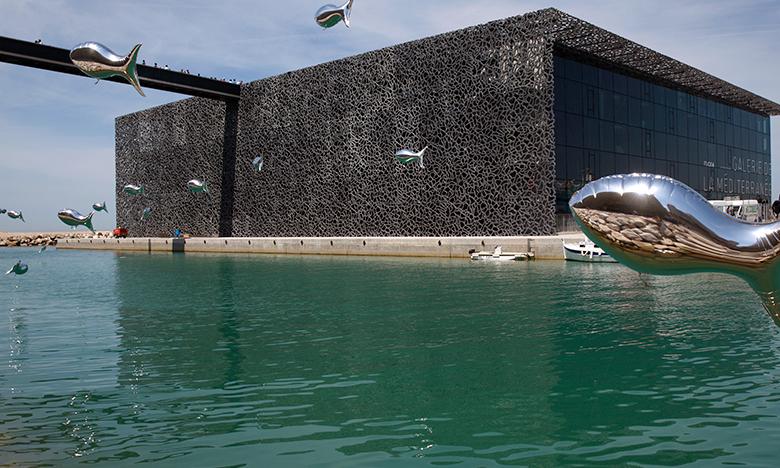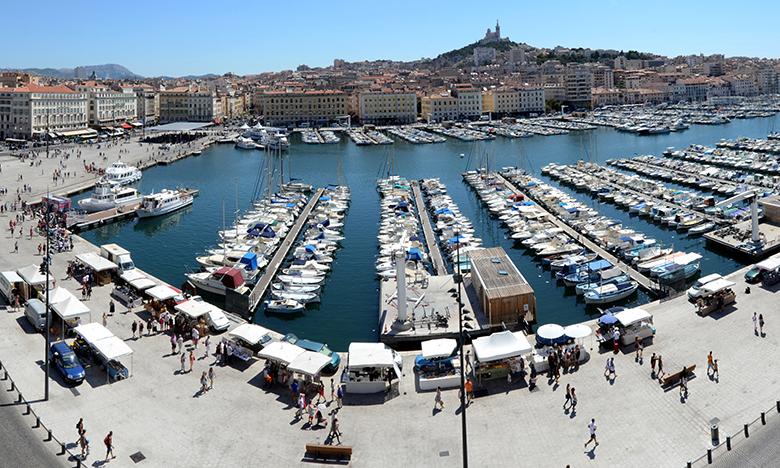For more information, visit the Marseille Tourism Office and Convention Bureau at www.marseille-tourisme.com.
City region: Provence / Provence-Alpes-Côte d'Azur
Population & what they are called: 858,120 inhabitants (2014 census), called Marseillais
Access from Paris:
by road: about 7 hours (490 miles) via the A6 and A7 autoroute du Soleil
by train: about 3 h 15 min by TGV from the Gare de Lyon
by plane: 1h15, landing in Marseille-Provence Airport
Famous native daughters & sons:
Edmond Rostand, poet and dramatist
Maurice Béjart, choreographer
Zinedine Zidane, soccer player
Most distinctive and/or unique fact or trait (or little known fact):
Marseille hosted the FIFA World Cup 1998, was European Capital of Culture in 2013, welcomed the UEFA Euro 2016 and is the European Capital of Sport in 2017.
Since the 1930s, the world's most commonly used tarot deck has been called the Tarot de Marseille.
Notable sites:
Vieux Port – now completely renovated by Norman Foster, the city's main harbor and marina is lined with cafes and the site of the Ombrière, a large mirrored sunshade and events pavilion
Basilique Notre Dame de la Garde – the enormous 19th-century Romano-Byzantine basilica that occupies Marseille’s highest point and delivers panoramic views of the city (notredamedelagarde.com)
Abbaye de Saint-Victor – one of Europe’s oldest places of Christian worship, with a 5th-century crypt that is home to a Black Madonna who is paraded every year at Candlemas
Top annual events:
Fête du Panier – concerts, street theater, art expos, circus performances, cooking classes and more held in the streets of the district
Festival Marsatac – Marseille's biggest electronic and urban music festival (marsatac.com)
Fiesta des Suds – four-day festival with a diverse lineup of rap, reggae, funk and soul performers from all over the world (dock-des-suds.org/fiesta2017/)
Most notable museums:
Musée des Civilisations de l'Europe et de la Méditerranée (Mucem) – the first national museum to be designated out of Paris, devoted to the history and culture of European and Mediterranean civilizations (mucem.org)
La Cité Radieuse – visit a furnished typical apartment in this building built by architect Le Corbusier in the 1950s and now a World Heritage Site (marseille-citeradieuse.org)
Centre de la Vieille Charité – originally an alms house, but now home to an archeological museum, a gallery of African and Asian art, a poetry center, bookshops and a café (vieille-charite-marseille.com)
Culinary specialties:
bouillabaisse – a fish stew containing at least three varieties of fresh local fish plus potatoes and vegetables, also with a separate rouille (mayonnaise made with egg yolk, olive oil, red bell pepper, saffron and garlic) spread on pieces of toasted bread
navettes de Marseille – little boat-shaped biscuits flavored with orange blossom
chichi frégi – a favorite street food of fried dough sprinkled with sugar
Local wines & spirits:
pastis – an alcoholic beverage made from a secret recipe that includes aniseed and spice
La Cagole – a blond beer with attitude but a whole lot of charm, produced locally
anisette Cristal – an anise-flavored liqueur
Shopping:
Centre Bourse and area around Rue Paradis – the main, central shopping area
Les Terrasses du Port – a shopping center of 160 shops and restaurants in La Joliette, and amazing views from the roof terrace
Rue Sainte and the Saint-Victor district – an ever-increasing number of trendy shops for an artsy shoppers
Most popular night spots:
Cours Julien and La Plaine – two large plazas surrounded by cool cafes and bars, with busy streets between them notable for their street art
Les Docks du Suds – a cultural center devoted to world music and alternative events using large indoor and outdoor activity areas for concerts, night clubs and more (dock-des-suds.org)
R2 (Le Rooftop) – amazing views and the sensation of dancing in the air at this amazing site in the new Euromediterranée district (airdemarseille.com/le-rooftop/)
Local population’s favorite activities (or hangouts):
Le Panier – all that remains of the old town after World War II, a maze of lanes lined with artisan shops, workshops and terraced homes overlooking hidden squares and artsy cafes
the islands – including the Château d'If (chateau-if.fr), the fortress prison of Monte Cristo fame, and the Îles du Frioul, isolated rocks with rare plants, sea birds, a few beaches and lovely views
the Calanques – a wild mountainous coastal area, parts of which are now a national park, with many walking trails and hidden beaches (calanques-parcnational.fr)
Local industries:
port services – the commercial port is the first French port and the fifth European port by cargo tonnage, a good portion of that petroleum, which is refined in the area too
research – Marseille is France's second largest research center, with 3,000 research scientists within Aix Marseille University alone
media – La Belle de Mai once an industrial area, has now been turned over to cultural and multimedia activities, including film and television studios
In Pop Culture:
The Count of Monte Cristo (Le Compte de Monte Cristo) by Alexandre Dumas – a literary classic about a man who is wrongfully imprisoned (at the Château d’If in Marseille), escapes from jail, builds a fortune and then seeks revenge
hip hop music – Marseille is a center of music of today, made popular by Marseille bands like IAM, Fonky Family, Psy 4 de la Rime and Keny Arkana
Love Actually – a 2003 romantic comedy about love in which Colin Firth has a scene at the Bar de la Marine in the Vieux-Port
Major 2020 developments:
- From June 7 to November 1, 2020, Top French City Marseille will be a focal point for contemporary art by hosting the roving European biennial known as MANIFESTA, also a first for France. A dialogue between art and the community, Marseille will be alive in installations, out-door happenings and exhibitions
About Top French Cities - www.francepresskit.com
Top French Cities is an association of 29 cities, from regional capitals like Bordeaux to important towns like Avignon and Versailles. They are perfect for young travelers, families and anyone else looking for fun and authentic French experiences that will fit their budget. Most of these cities are university towns with a youthful atmosphere, but all of them reflect the heritage and distinctive flavors of the regions to which they belong. Many are forward-looking too, with historic buildings repurposed to house contemporary art and activity centers like Les Docks in Marseille. Many have created or integrated new, modern museums to contrast with their classical, architectural heritage, like in Nimes, where the cutting-edge Museum of Roman Civilization (Musée de la Romanité) is located across from the historic Roman amphitheater, or in Nantes, where whimsical mechanical creatures are being created, or in the UNESCO World Heritage Site concrete city of Le Havre.



